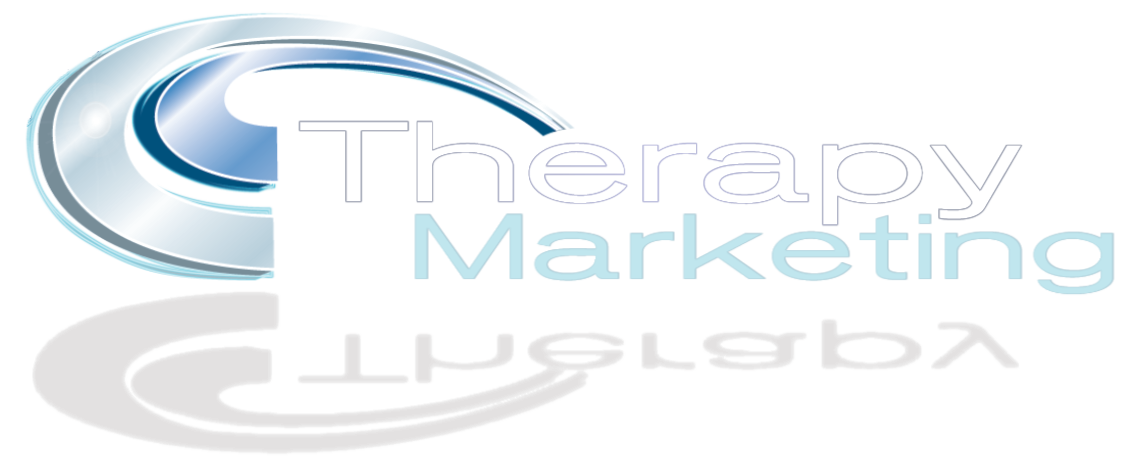Therapy Marketing mistakes that many therapists make
But how can these mistakes help you? As with everything, being forewarned is being forearmed. You can use this insight to adapt and turn it to your advantage. If you don’t recognise and avoid the seven deadly sins of therapy marketing, you risk making significant therapy marketing mistakes. By not repeating the common therapy marketing mistakes that other therapists often make, you’ll put yourself ahead of the competition and set your practice up for success.
Why do you buy anything?
Chances are, one of the seven deadly sins of marketing influences every buying decision. Now, flip that around. How about your therapy practice? Can you relate it to one of these therapy marketing mistakes? If you can, you’re more likely to guide a potential client towards choosing your services. Avoiding these common therapy marketing pitfalls could be the key to making clients pick you over your competitors. Read on to learn more.

Greed – It makes your potential client more successful, more profits…you get the picture.

If your therapy helps clients become more successful, better businesspeople, stronger communicators, more confident, or simply better at their job, make that clear in your advertising and on your website. Potential clients will soon be beating a path to your door. Greed isn’t just about money or wealth—people are eager to gain more self-confidence, self-worth, and happiness, and why shouldn’t they be? Highlighting these benefits will help you avoid common therapy marketing mistakes and attract clients seeking personal growth.
Sloth – Does your therapy make life easier for your client…

The primary reason any client chooses your therapy services is because of the benefits they expect to receive. If you’re not clearly communicating these benefits to potential clients at every opportunity, you’re making some significant therapy marketing mistakes. Highlight the benefits of your therapy services to attract new clients and encourage them to get in touch.
Focusing on your clients’ needs and showing how your therapy meets those needs is essential to growing a successful practice. Make it as easy as possible for potential clients to engage with you. Remove any barriers that might prevent them from doing business with you. For example, if they’re required to fill out a form before their first session, consider simplifying or removing it. Ensure you accept various payment methods, and make sure your phone is answered whenever possible—don’t rely solely on an answerphone. Addressing these common therapy marketing mistakes will make your practice more client-friendly and help you stand out from the competition.
Envy – If your potential clients want to be just like everyone else.

Most clients are influenced by the desire to be like their friends. Show them how your therapy can help them achieve this, whether it’s success, appearance, emotional well-being, beliefs, comfort, being pain-free, or overall happiness. By addressing these needs, you not only help clients feel better but also empower them to stand out and attract envy from their peers. Make them shine from within, so they feel confident, happy, and fulfilled, just like the people they admire.
Gluttony – Go on, eat as much as you like, you’ll lose weight!

Be cautious here, as there are ethical considerations. A well-known hypnotist promotes this idea and has made millions, but every client seeks a ‘magic pill.’ Instead, see if you can shift this to a more realistic expectation—they might appreciate your honesty. Making exaggerated claims like these is one of the serious therapy marketing mistakes. Another common mistake is guaranteeing what your clients will do. Don’t do it. Not only is it unethical, but it’s also completely unnecessary. Avoiding these therapy marketing mistakes will help you build trust and maintain credibility with your clients.
Pride – Once they have had this treatment they will feel really good about themselves.

Give your clients a compelling reason to feel good about themselves, and they’ll keep coming back. Boosting their self-esteem, self-worth, and self-confidence will leave them wanting more—what more could they ask for? Not only that, but they’ll also share their positive experience with their friends, which is exactly what you want to grow your practice and avoid common therapy marketing mistakes. Word-of-mouth referrals can be one of the most powerful ways to attract new clients and strengthen your reputation.
Lust – After this therapy you’ll be fighting them off.

If you can help your potential clients look better or feel more confident about their appearance, let them know. Making them feel attractive, sexy, and self-assured will grab the attention of their friends, who will undoubtedly notice and comment. It’s a powerful motivator, perhaps the most powerful for many, and one they won’t be able to resist. By tapping into this desire, you’ll not only draw in more clients but also become the envy of your competitors, all while avoiding common therapy marketing mistakes.
Wrath – Some people are really angry with themselves.

Encourage your clients to feel frustrated with their old selves, so they’re motivated to embrace change. If you can help them feel more relaxed, confident, or happier with themselves, it’s invaluable to them. However, be cautious, failing to deliver on your promises could lead to dissatisfaction, and their frustration may be directed at you. Ensuring you can deliver what you promise is crucial to avoid serious therapy marketing mistakes and maintain the trust and loyalty of your clients.
Make sure you apply the seven deadly sins to your therapy marketing every chance you get. Apply it to your website, leaflets, flyers etc make sure you take advantage of the Therapy marketing mistakes that other therapists are often making. Make sure you check out our 5 golden rules to avoid other common website errors.
Common Pitfalls in Therapy Marketing and How to Avoid Them
Marketing a therapy practice can be tricky, and many therapists stumble into common mistakes that hinder their success. Whether it’s overlooking their online presence or neglecting client engagement, these missteps can cost you time, money, and potential clients. Below are some of the most frequent therapy marketing pitfalls and how you can avoid them.
1. Failing to Define Your Ideal Client
A major mistake therapists often make is not defining a specific target audience. While it’s tempting to market to everyone, this broad approach dilutes the effectiveness of your messaging and makes it harder to connect with potential clients.
Solution: Clearly define your ideal client. Are you targeting individuals struggling with anxiety, or couples looking for relationship counselling? By narrowing your focus, you can tailor your marketing messages to attract the right clients and speak directly to their concerns.
2. Ignoring Local SEO
Many therapists overlook local SEO, which is crucial for being found by potential clients in your area. If your therapy practice isn’t optimised for local searches, you may miss out on clients searching for therapy services nearby.
Solution: Optimise your website for local searches by including location-specific keywords such as “therapy services in [Your Town/City].” Ensure your Google My Business profile is fully updated with your address, contact details, and positive client reviews. This will help your practice appear in “near me” searches, which are commonly used by people looking for local therapists.
3. Inconsistent Social Media Presence
Some therapists either shy away from social media or use it sporadically. Although it can feel overwhelming, social media is an invaluable tool for building trust with potential clients.
Solution: Create a manageable posting schedule and focus on platforms where your ideal clients are active. Share useful mental health tips, client success stories (with consent), or even personal insights to humanise your brand. Consistency is key in maintaining engagement and fostering connections with your audience.
4. Not Tracking Marketing Efforts
Another common mistake is not measuring the results of your marketing efforts. Without tracking your website’s performance or social media engagement, you may miss opportunities to improve your strategy.
Solution: Use tools like Google Analytics or the insights provided by social media platforms to track key metrics, such as website traffic, conversions, and social media engagement. Adjust your marketing based on what’s working and eliminate what isn’t delivering results.
5. Overcomplicating Your Messaging
Therapists often make the mistake of using overly complex or technical language in their marketing materials. This can confuse potential clients and create a barrier to engagement.
Solution: Keep your messaging simple and relatable. Avoid jargon and focus on explaining how your services can help solve your clients’ problems. This will make it easier for prospective clients to understand your value and feel more confident about reaching out.
Top Therapy Marketing Strategies for 2024
As the digital marketing landscape evolves, therapy marketing strategies need to adapt to stay effective. With 2024 approaching, it’s important to consider the latest trends that can help therapists attract more clients and grow their practices. Here are some of the top strategies to implement in the coming year.
1. Prioritise Video Content
Video content is still dominating online platforms, and its popularity is only expected to grow in 2024. Videos allow therapists to connect with potential clients in a more personal and engaging way.
Why It Works: People seeking therapy often look for a sense of connection and trust before reaching out. Video content allows you to showcase your personality, explain your services, and address common concerns directly. Even a brief introduction video or a Q&A session can go a long way in making potential clients feel more at ease.
How to Implement: Start by creating short, informative videos. These could include topics like “How to Manage Anxiety,” “What to Expect in a Therapy Session,” or even testimonials from satisfied clients (with their permission). Upload these videos to your website, YouTube, or your social media platforms.
2. Use Paid Advertising Effectively
While organic traffic is essential, paid advertising offers a quick and effective way to attract targeted clients. Platforms like Google Ads and Facebook Ads allow you to reach specific demographics, ensuring your ads are seen by people who are most likely to need your services.
Why It Works: With carefully targeted ad campaigns, you can ensure your practice reaches individuals who are actively searching for therapy services or who have shown interest in mental health-related content. Paid ads give your practice visibility even while organic search results are being developed.
How to Implement: Start with a modest budget and experiment with both Google Ads and Facebook Ads. Google Ads will help you target local searches like “therapists near me,” while Facebook allows for interest-based targeting, such as individuals interested in mental health and wellbeing. Make sure your ads are compelling, with a clear call to action, such as “Book a Free Consultation.”
3. Focus on SEO-Driven Content Marketing
Content marketing that’s optimised for SEO remains one of the best ways to attract organic traffic. Writing blog posts, articles, or guides that address common mental health issues will not only improve your search engine rankings but also position your practice as an authority in the field.
Why It Works: Creating valuable content that addresses your target audience’s pain points builds trust and credibility. By covering topics like “how to manage stress” or “effective couples therapy techniques,” you demonstrate your expertise and increase the likelihood that readers will contact you for therapy.
How to Implement: Focus on writing blog posts or articles around relevant keywords, such as “therapist tips for anxiety management” or “relationship counselling advice.” Ensure each piece of content is well-optimised for search engines, including proper use of headings, meta descriptions, and internal links.
4. Optimise for Voice Search
With the rise of devices like Alexa and Google Home, optimising for voice search is becoming more important. Voice searches tend to be more conversational and question-based, making it essential to tailor your content for these types of queries.
Why It Works: Voice search queries are often local and phrased as questions. Optimising your content for voice search can help ensure that your practice appears in these results, especially for “near me” queries.
How to Implement: Incorporate natural language and long-tail keywords into your content. Questions like “What’s the best therapy for anxiety?” or “Where can I find a therapist near me?” should be part of your website FAQs and blog content.
By implementing these strategies, you’ll position your therapy practice for success in 2024 and beyond.
